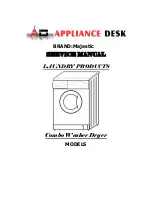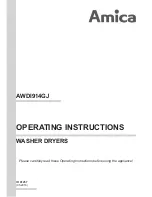
7
Important Trailer Safety Information
Referencing the Utility Trailer in this
Manual
All references to the trailer or component parts to either
left or right are made with the assumption that you are
standing behind the trailer facing forward. Your left
hand or right hand is the equivalent on the trailer.
Tire Safety
The most common cause of trailer tire failure is under-
inflation. Therefore, it is important that you always
maintain the specified air pressure as indicated by the
tire manufacturer on the tire's side-walls. This informa-
tion can also be found on the tire label or the air
pressure molded on the tire side-wall.
The most important things you can do to maintaining
proper tire pressure are observe all tire and trailer
maximum carrying capacities, avoid road hazards, and
inspect the tires for cuts, slashes and other irregulari-
ties. These practices, along with other care and mainte-
nance, can improve handling, help protect you and
others from avoidable breakdowns and accidents,
improve fuel economy, and increase the life of your
tires.
Make tire safety a regular part of your trailer mainte-
nance routine. The time you spend is minimal
compared to the amount of time, inconvenience, and
potential safety hazards that can occur from a flat tire or
failure.
Basic Tire Maintenance
Properly maintained tires improve the load-carrying
capability of your trailer. You can help avoid flat tires
and tire failures by maintaining proper tire pressure,
observing tire and trailer capacity limits, avoiding road
hazards, and inspecting your tires regularly.
Identifying Your Recommended Tire
Pressure and Maximum Load Carrying
Capacity for Your Trailer
Both the tire placard and the VIN label are permanently
attached on top of the frame of your trailer and have the
required information printed on them. They also list the
maximum load that can be placed on the trailer without
exceeding the load limits of the tires or the trailers other
components. These labels indicate the manufacturer’s
information including:
Recommended tire size.
•
Recommended tire inflation pressure.
•
The maximum weight the trailer is designed to
carry.
•
Gross vehicle weight rating of the trailer.
•
Gross axle weight rating of the trailer.
Understanding Tire Pressure and Load
Limits
Tire inflation pressure is the level of air in the tire that
provides it with the load-carrying capacity and affects
the overall performance of the trailer. The tire inflation
pressure is a number that indicates the amount of air
pressure that is inside the tire. It is measured in pounds
per square inch (PSI). The tire must be inflated to the
air pressure as designated on the labels. Also listed on
the labels is the air pressure in kilo Pascals (kPa),
which is a metric measurement. Tire manufacturers
determine the air pressure to maximize the amount of
weight the tires can safely carry. The proper tire
pressure for your trailer tires is referred to as the
"recommended cold inflation pressure." It is difficult to
obtain the recommended tire pressure if your tires are
not cold when the reading is taken because the air will
expand when it is warmed by towing down the road,
thus increasing the air pressure inside. If air is added to
a tire that is low the air pressure should never exceed
the recommended pressure.
It is important to check your trailer’s tire pressure at
least once a month for the following reasons:
Most tires will naturally lose air over time.
Tires can lose air suddenly if driven over an object that
punctures or cuts the tire. Sometimes a sharp blow
from a pothole or curb can knock the tire loose from the
rim causing immediate deflation.
Karcher HDS 3.5/40 GE MT Operator’s Manual 9.807-942.0 - B








































